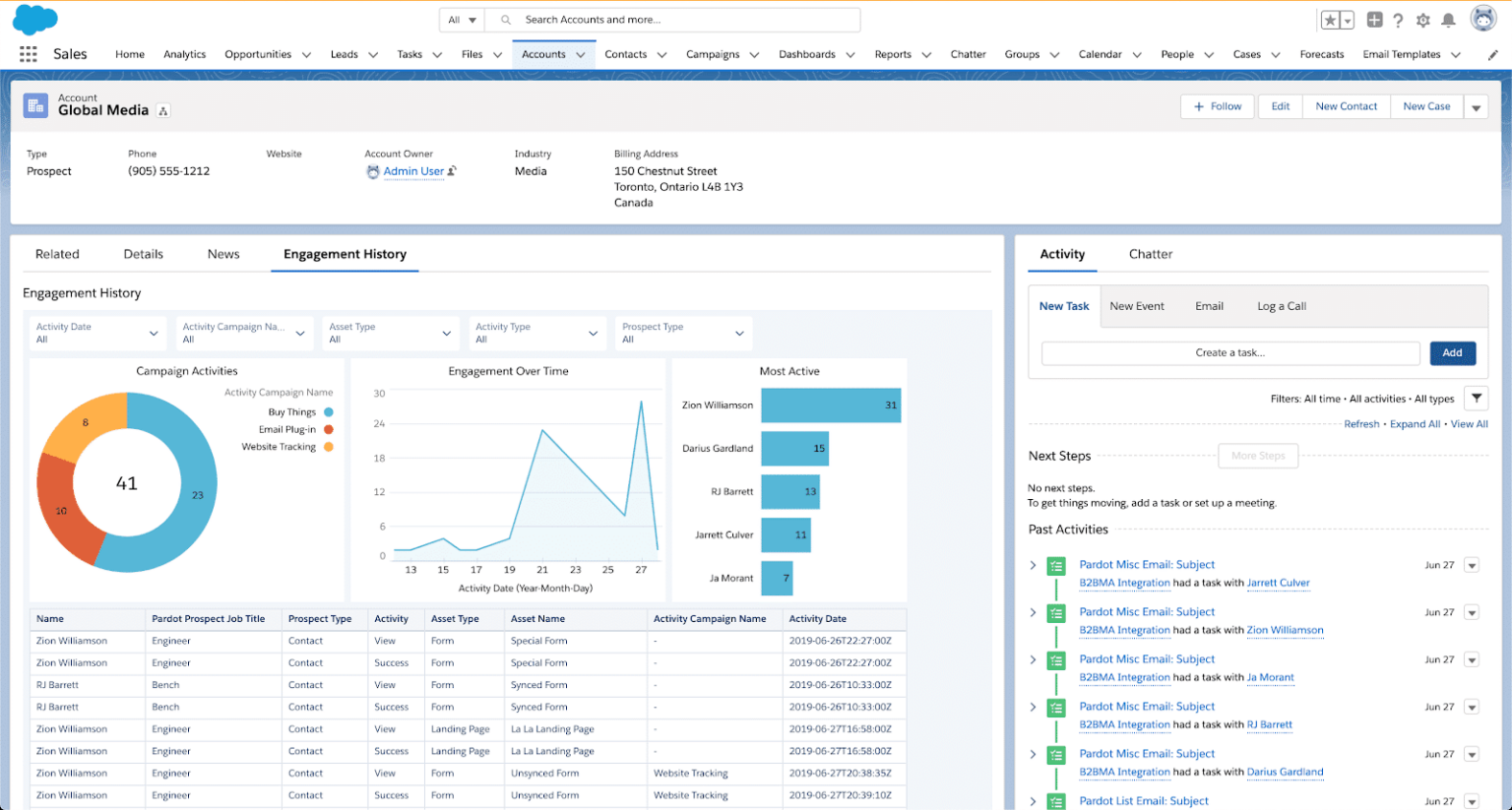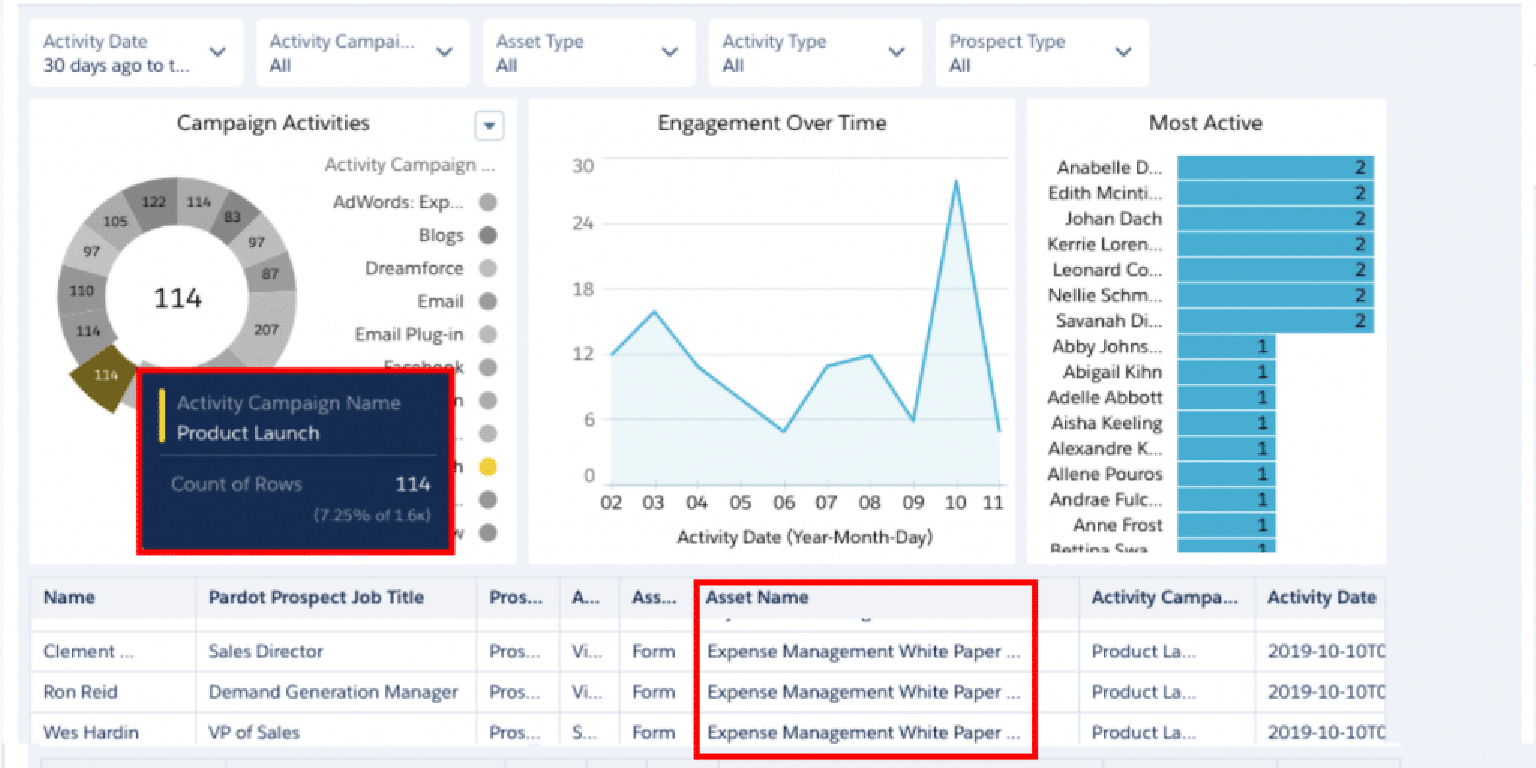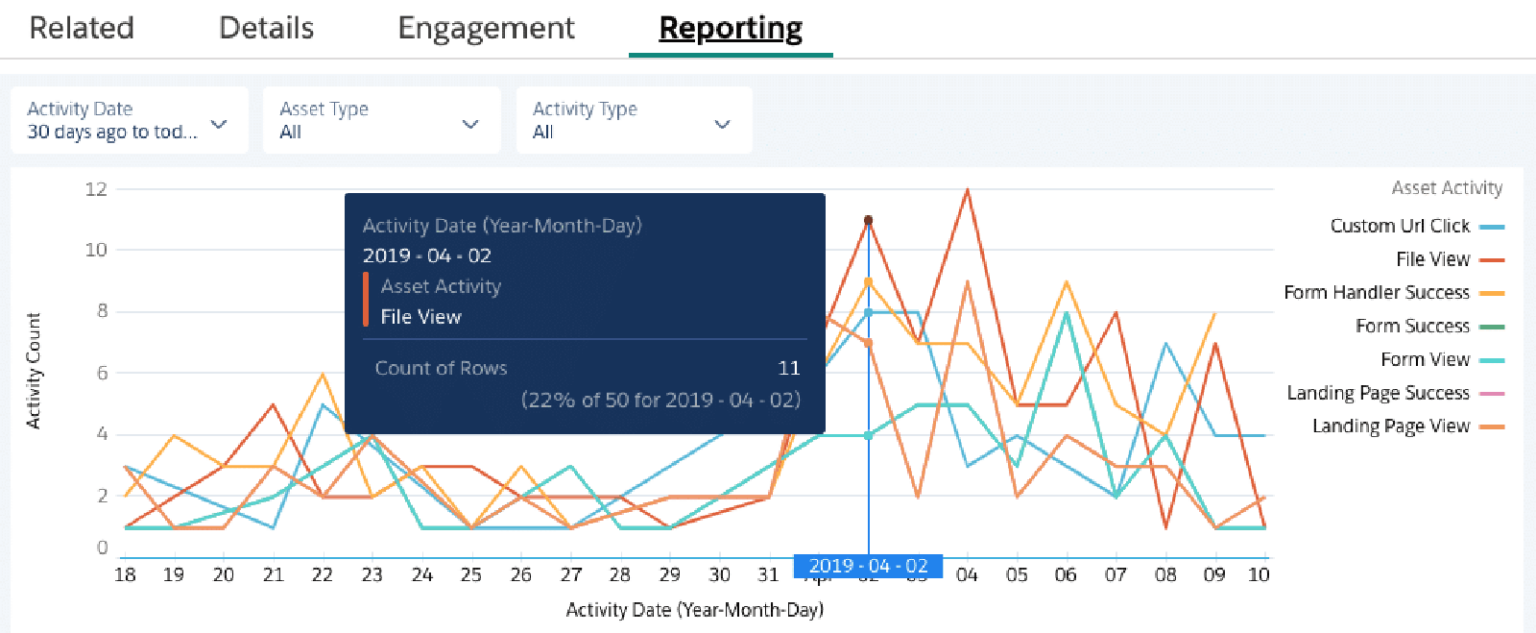Enhanced Pardot Campaign Reporting at Your Fingertips
Engagement History Dashboards are out-of-the-box dashboards powered by Tableau CRM. This dashboard component can be embedded on campaign, account, lead, contact, person account, or opportunity records within Salesforce. There you can view how prospects have interacted with your campaign over time – across emails, landing pages, and files associated with the campaign.
If you don’t have B2B Marketing Analytics or haven’t yet explored the full Analytics platform, Engagement History Dashboards is designed for you. When your Pardot prospects engage with your marketing assets, you can now see their actions in Salesforce in a variety of ways and use those insights to inform your decisions about that prospect, both from a sales and marketing perspective.
So how does this benefit you? By giving you immediate visibility into metrics and enabling you to take quick action based on insights.
Better understand which prospects are engaging with a particular Account-Based Marketing campaign:
The Engagement History Dashboard allows marketers and salespeople to easily find prospects interacting with that specific campaign and then base their follow-up tasks upon those that are most engaged.

Enjoy greater visibility to those that Salesforce terms “Hand-Raisers”:
“Hand-raisers”, as Salesforce affectionately calls them, are prospects within your accounts that are actively engaging with marketing assets and campaigns, indicating some form of interest. Think the “Pick me!” kids you remember from grade school. Using the Engagement History Dashboard, sales reps can view an Account, choose a particular time period for the Activity Date EQUALS field, and then find all prospects within that account that have interacted with marketing campaigns in that timeframe. Even better, Sales can see what campaigns or assets have been engaged with by the prospect so conversations can be more tailored and relevant to the individual.

Replicate Marketing Campaigns based on seasonal trends:
Using Engagement History Dashboards, marketers can track trends in engagement and use that data to replicate campaigns at specific time periods when it makes sense.

Align Sales and Marketing on campaign performance:
Sales often wonders “What does Marketing actually do, and is it really helping me?” And rightly so, as often Marketing and Sales live in different silos within an organization. Engagement History Dashboards give Sales the ability to slice and dice data as they need. But even more powerful, it’s a great visual of marketing’s efforts. And no more worrying about disseminating your marketing data into reports for Sales. Now marketers can direct Sales to the Engagement History Dashboard to see the data for themselves and drill down where they want. It’s a win-win!
What makes all of this even better? It’s super-simple to turn on Engagement History Dashboards and get them set up on your various record types.
For directions on how to turn on Engagement History Dashboards, click here.
A quick note: For Engagement History to work, you must have Pardot for Lightning and connected campaigns. Engagement History Dashboards are available in Salesforce Professional (with API access), Enterprise, Performance, and Unlimited Editions with Pardot Growth, Plus, Advanced, or Premium Edition.